

Anatomy of a Holiday Charcuterie Board
Summary
Reflection Questions
Journal Prompt
While many joke that our affinity for charcuterie boards as adults comes from our love of Lunchables and bento boxes as children, these delicious appetizers are reliable party people-pleasers. Their rising popularity stems from an ability to offer a diverse array of tastes and textures, satisfying a wide range of palates. An effective holiday charcuterie board is not just about the selection of meats and cheeses; it’s a careful balance of presentation, taste, and variety that elevates the dining experience. In this article, we will examine key elements that make a holiday charcuterie board both visually appealing and delightfully flavorful, ensuring it stands out as a centerpiece in festive celebrations. From goat cheese and cured meats to gluten-free crackers and pickled vegetables, here’s how to create the perfect holiday charcuterie board for your upcoming events.
The Basics of a Charcuterie Board
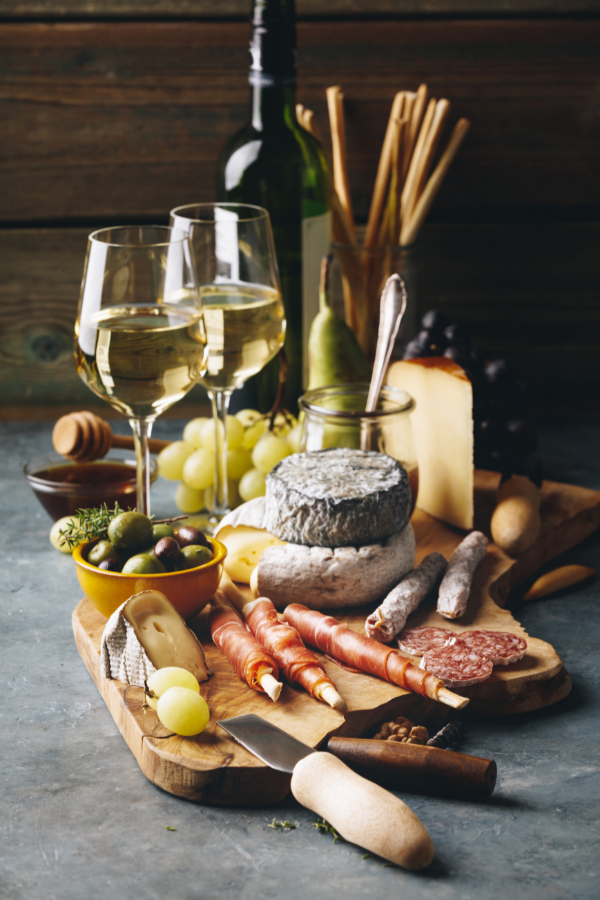

A charcuterie board, traditionally rooted in the French culinary arts, is a platter typically featuring a variety of cured meats and related items. The term ‘charcuterie’ itself originates from the French words for flesh (‘chair’) and cooked (‘cuit’).
Historically, these boards were a way to showcase preserved meats, a method essential before refrigeration. Today, charcuterie boards have evolved into a popular choice for gatherings, celebrated for their versatility and appeal.
Essential Components: Meats, Cheeses, Accompaniments
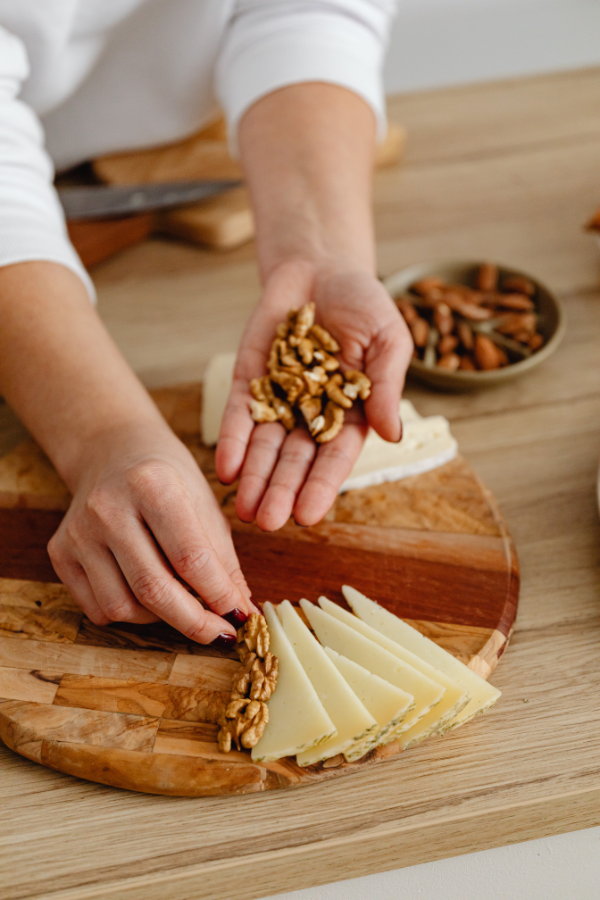

The core of any good charcuterie board is its selection of cured meat, which usually includes options like prosciutto, peppered salami, and chorizo. These are complemented by a range of cheeses – from soft cheese like brie or fresh mozzarella to hard cheese like sharp cheddar or smoked gouda.
The assortment is rounded off with various accompaniments such as crackers, bread, fruits, nuts, pickles, and spreads. This combination ensures a play of textures and flavors, catering to different taste preferences. For the holidays, consider dried fruit and fresh fruit like apple slices or pear slices, a festive nut like candied pecans, and an aromatic herb like fresh rosemary.
Considerations for Size and Number of Guests


The size of a charcuterie board and the quantity of each component should be tailored to the number of guests. For smaller gatherings, a more concise selection allows for a focus on quality and specialized items. Opt for a small board with items you know each guest will enjoy.
Larger groups may require a more extensive array with sufficient quantities to ensure variety and abundance. Opt for a large board with vegan and gluten-free options to satisfy all guests.
The key is to balance quantity with quality, ensuring each guest can sample a bit of everything without the board appearing sparse or overwhelmingly crowded.
Sourcing Ingredients for Your Cheese Boards
Sustainably sourcing ingredients for your charcuterie board is not just a responsible choice for the environment, but it also often leads to fresher, more flavorful selections. When it comes to charcuterie meats, look for local butchers or farmers who practice ethical animal husbandry and use environmentally friendly methods.
These meats are typically free from unnecessary antibiotics and hormones, contributing to better health and taste. For cheeses, consider artisanal cheese makers who use milk from local farms. These small-scale producers often employ traditional cheese-making methods, which not only preserve the cultural heritage but also tend to be more sustainable.
Buying local has numerous benefits. Firstly, it supports your local economy by ensuring that your money goes directly to small-scale farmers and artisans. This support is crucial for the survival of local businesses and traditional food practices.
Secondly, local products generally have a smaller carbon footprint as they require less transportation, reducing the overall environmental impact. Furthermore, local ingredients often come with a story – knowing where your food comes from and how it was produced adds a personal touch to your charcuterie board. It can also be a point of conversation with your guests, making the dining experience more engaging and educational.
Selecting the Right Ingredients
Types of Meats to Include: Cured, Smoked, and Variety in Flavors and Textures
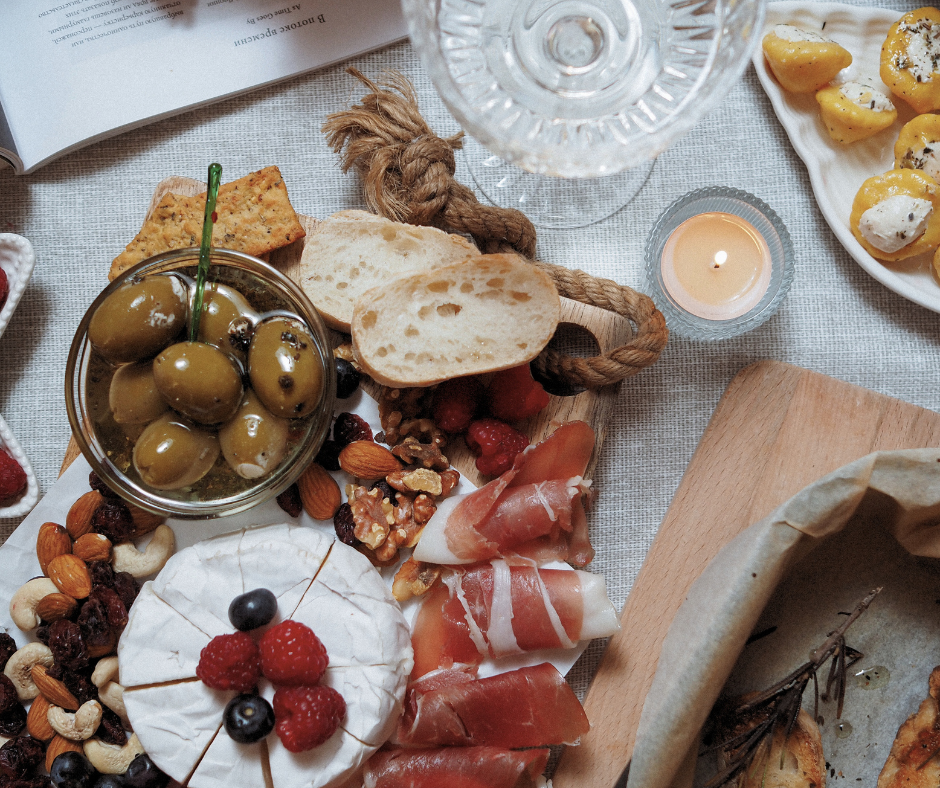

When selecting meats for a charcuterie board, aim for a variety that offers different flavors and textures. Cured meats like salami and prosciutto are staples, known for their rich and savory taste.
Smoked meats, such as smoked ham or turkey, add a distinct flavor profile. Include a mix of thinly sliced options and thicker cuts to provide textural contrast. The variety ensures that each bite is unique and that guests have a wide range to choose from. How much meat you add to your charcuterie plate will depend on your preferences and the dietary restrictions of guests at your holiday parties.
Cheese Selection: Balancing Soft, Hard, Aged, and Creamy Cheeses
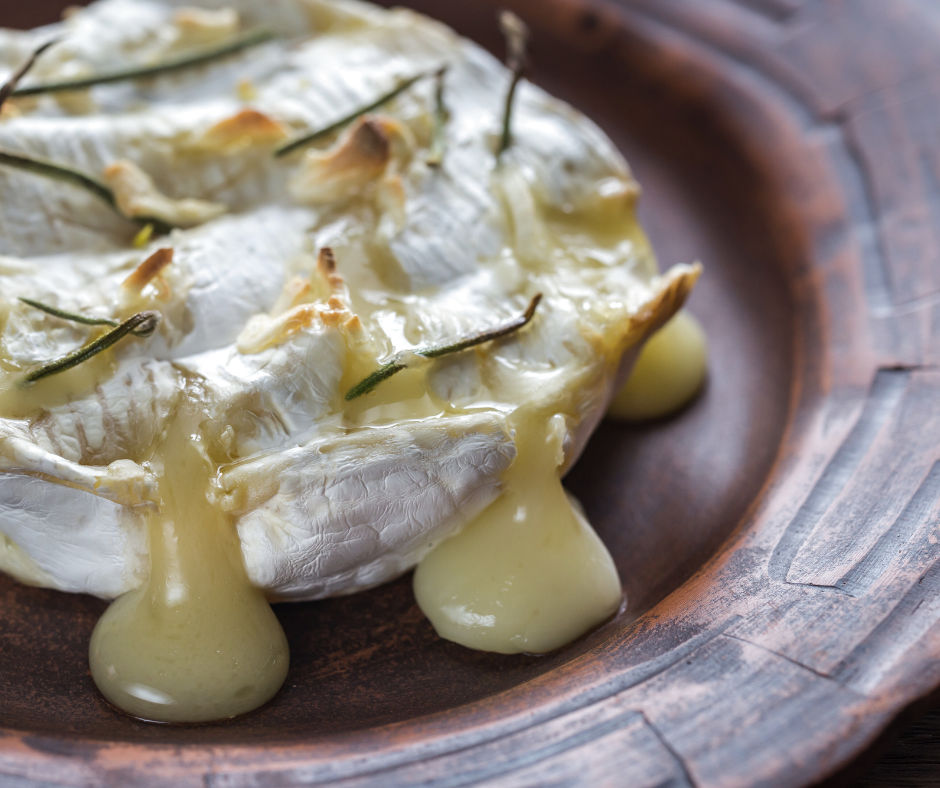

Cheese is a cornerstone of any charcuterie board, and the selection should be as diverse as the meats. Soft cheeses like brie or camembert offer a creamy texture, while hard cheeses such as cheddar or gouda provide a firmer bite.
Aged cheeses, like Parmigiano-Reggiano, bring depth of flavor. Including a creamy cheese, like goat cheese or blue cheese, adds a tangy element. This balance ensures that the cheese selection complements the meats and adds to the overall sensory experience.
Accompaniments: Crackers, Fruits, Nuts, Jams, and Spreads
Accompaniments are essential in enhancing and contrasting the flavors of meats and cheeses. They also make for a more beautiful board, which is crucial for any holiday party. Crackers and slices of baguette serve as a base, while fruits like grapes, figs, or slices of apple and pear add a sweet and refreshing touch.
Nuts bring a crunchy texture and a nutty flavor, balancing the richness of the meats and cheeses. Jams and spreads, such as fig jam or honey, offer a sweet counterpoint that complements the savory elements. Sweet treats like dark chocolate and winter fruits like fresh berries are ideal. These accompaniments not only add variety but also allow guests to create their own flavor combinations.
Thematic and Seasonal Considerations
Choosing Ingredients that Reflect the Holiday Season
Selecting ingredients for a charcuterie board that resonate with the holiday season can significantly enhance its thematic appeal. Consider incorporating seasonal meats, like spiced or herbed sausages, and cheeses that have a warming, rich flavor, such as a cranberry-infused Wensleydale.
Seasonal fruits like pomegranates or persimmons can add both flavor and a festive touch. These choices not only elevate the board’s aesthetic but also bring a sense of the season to the palate.
Incorporating Festive Colors and Flavors
The visual appeal of a charcuterie board is almost as important as its taste. To infuse a festive flair, integrate items with traditional holiday colors. Red and green grapes, sugared cranberries, bell peppers, brightly colored jams, and vibrant cheeses contribute to a visually appealing spread even if the base is just a typical wood board.
Flavor-wise, look for items that evoke the essence of the holiday season, such as cinnamon-spiced meats or pumpkin-flavored spreads. This approach ensures that the board is not just a treat for the taste buds but also a feast for the eyes.
Make It Thematic
To make your charcuterie board stand out, consider adopting a specific theme. A traditional theme might focus on classic meats and cheeses, paired with timeless accompaniments. For an international twist, include international items like Spanish chorizo or French pâté.
Alternatively, showcasing regional specialties offers a unique experience, such as using locally sourced cheeses and artisanal meats. Each theme provides a different experience and can be tailored to the preferences of your guests or the specific holiday being celebrated.
Presentation and Arrangement
Board Selection: Size, Material, and Aesthetics
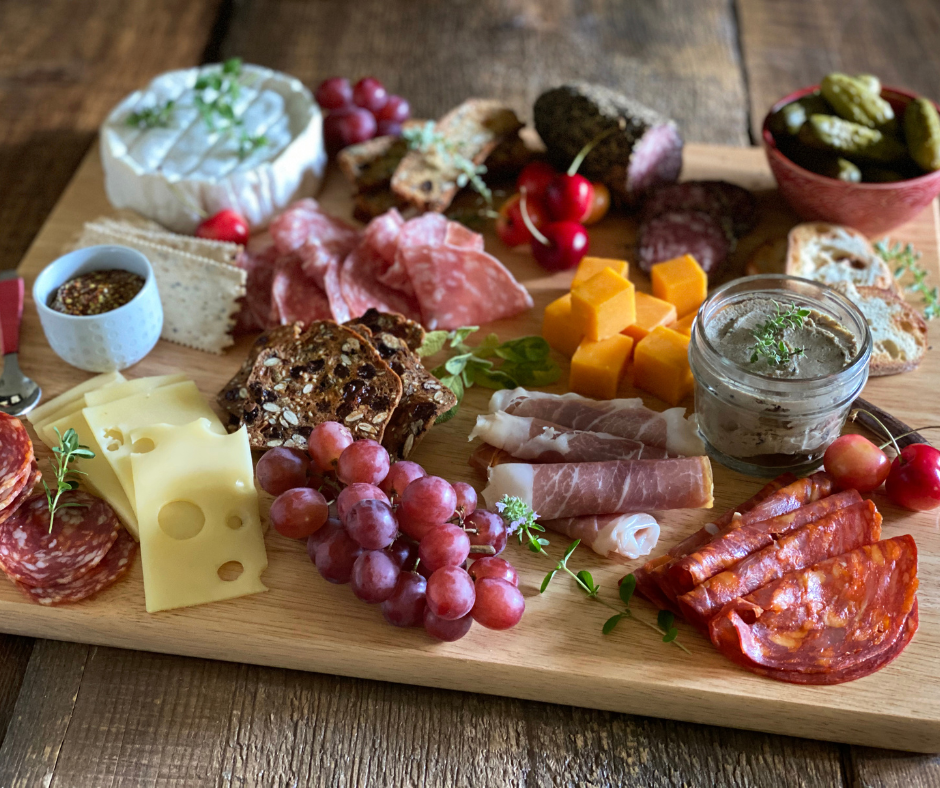

The choice of board is fundamental to the presentation of your charcuterie spread. Consider the size of the board based on the number of guests and the variety of items you plan to include.
Materials range from classic wood, which offers a rustic appeal, to marble or slate for a more elegant presentation. The aesthetic should align with your overall theme and setting. Ensure the board is spacious enough to accommodate the arrangement without overcrowding, allowing each item to be easily accessible.
Arrangement Techniques for Visual Appeal and Accessibility
Effective arrangement is key to both the appearance and functionality of your charcuterie board. Start by placing larger items, like cheese blocks or a small bowl of honey, to create anchors on the board. Then, arrange meats and smaller items around these anchors.
Consider rolling or folding meats for visual interest and easier picking. Cheeses can be sliced or left in wedges for guests to cut themselves. Ensure there is a balance in the layout, with each item being easily reachable and the board looking full but not cluttered.
Decorative Elements: Garnishes, Thematic Decorations
Garnishes and decorations can transform a charcuterie board from a simple spread to a festive centerpiece. Use fresh herbs like rosemary or thyme for a touch of greenery, which also adds a delightful aroma.
Edible flowers or fruit slices can add color and texture. For thematic decorations, consider subtle elements that resonate with the holiday or occasion, like small ornaments or themed napkins placed near the board. These decorative touches should complement, not overpower, the food, enhancing the overall appeal and ambiance.
Don’t forget about your serving utensils! A beautiful cheese knife or honey dipper can enhance your holiday cheese board.
Pairing with Beverages
Suggestions for Wines, Spirits, and Non-Alcoholic Beverages


The right beverage pairings can significantly enhance the charcuterie board experience. For wine enthusiasts, a variety of reds, whites, and perhaps a sparkling option can cater to different tastes and pairings.
Consider classic reds like Pinot Noir or robust options like Cabernet Sauvignon for stronger meats and cheeses. White wines like Chardonnay or Sauvignon Blanc complement lighter, creamier cheeses well. For spirits, a selection of craft beers or artisanal spirits like whiskey or gin can be included.
Non-alcoholic options should also be considered, such as sparkling waters, artisanal sodas, or mocktails, ensuring all guests have suitable choices.
Pairing Tips: Balancing Flavors Between the Board and Drinks


When pairing beverages with a charcuterie board, the goal is to balance and complement the flavors. Rich, fatty meats and cheeses pair well with wines that have good acidity or tannins to cut through the richness. Lighter, fresher components of the board can be enhanced with crisper, lighter wines or beverages.
For a more sustainable and authentic experience, consider opting for biodynamic wines. These wines, made using organic farming methods and a holistic approach to viticulture, not only offer unique flavors but also align with eco-friendly practices. This choice adds an additional talking point for guests and contributes to a more environmentally conscious dining experience.
Dietary Considerations and Alternatives
Options for Dietary Restrictions: Gluten-Free, Vegan, Lactose-Intolerant
When assembling a charcuterie board, it’s important to consider guests with dietary restrictions. For gluten-free options, include a variety of gluten-free crackers or bread. If hosting any guests with Celiac, ask for recommendations ahead of time and understand that a gluten-free board might not be safe enough for them.
Vegan guests can enjoy a range of plant-based cheeses and meat substitutes like vegan salami or marinated tofu. Lactose-intolerant individuals can be accommodated with lactose-free cheeses and dairy-free spreads. By incorporating these alternatives, you ensure that the board is inclusive and enjoyable for everyone.
Substitutes and Alternatives for Common Allergens
In addition to specific dietary restrictions, be mindful of common allergens. Nuts can be served separately to prevent cross-contamination or replaced with seeds like pumpkin or sunflower seeds. For those allergic to certain fruits, offer a variety that doesn’t include the allergenic fruit.
Always check labels for hidden allergens in processed items like meats and spreads. By carefully selecting substitutes and alternatives, you can create a charcuterie board that is safe and enjoyable for guests with allergies, ensuring everyone has a pleasant dining experience.
Tips and Tricks for an Epic Holiday Cheese Board
Do’s and Don’ts in Preparation and Serving Your Holiday Board


When preparing a charcuterie board, there are several key do’s and don’ts to keep in mind. Do ensure that all meats and cheeses are sliced and ready to serve for ease of eating. Don’t overcrowd the board; leave space for guests to pick up items without disrupting the arrangement.
Do provide separate knives for each cheese to avoid mixing flavors. Don’t forget to let the cheese come to room temperature before serving, as this enhances its flavor and texture. Lastly, do consider the flow of traffic around the board if serving at a gathering, ensuring it’s accessible from multiple sides.
Making Ahead and Storage Tips
To manage time effectively, much of the charcuterie board can be prepared ahead of time. Meats and cheeses can be sliced and stored in the refrigerator, covered, to maintain freshness. Spreads and dips can also be prepared in advance and refrigerated.
If making ahead, assemble the board close to serving time to maintain freshness and appearance. For storage, wrap leftovers individually and refrigerate. Most charcuterie items have a good shelf life when stored properly.
Engaging Guests with the Board: Interactive Elements, Tasting Notes
A charcuterie board can be more than just a meal; it can be an interactive experience for guests. Provide small cards with tasting notes for the different meats and cheeses, offering information about their origins or flavor profiles.
Encourage guests to create their own pairings and share their findings. You can also include interactive elements such as a build-your-own crostini station or a voting system for favorite items on the board. These elements not only enhance the dining experience but also foster conversation and engagement among guests.
Final Thoughts on Crafting a Beautiful Charcuterie Board for the Holidays
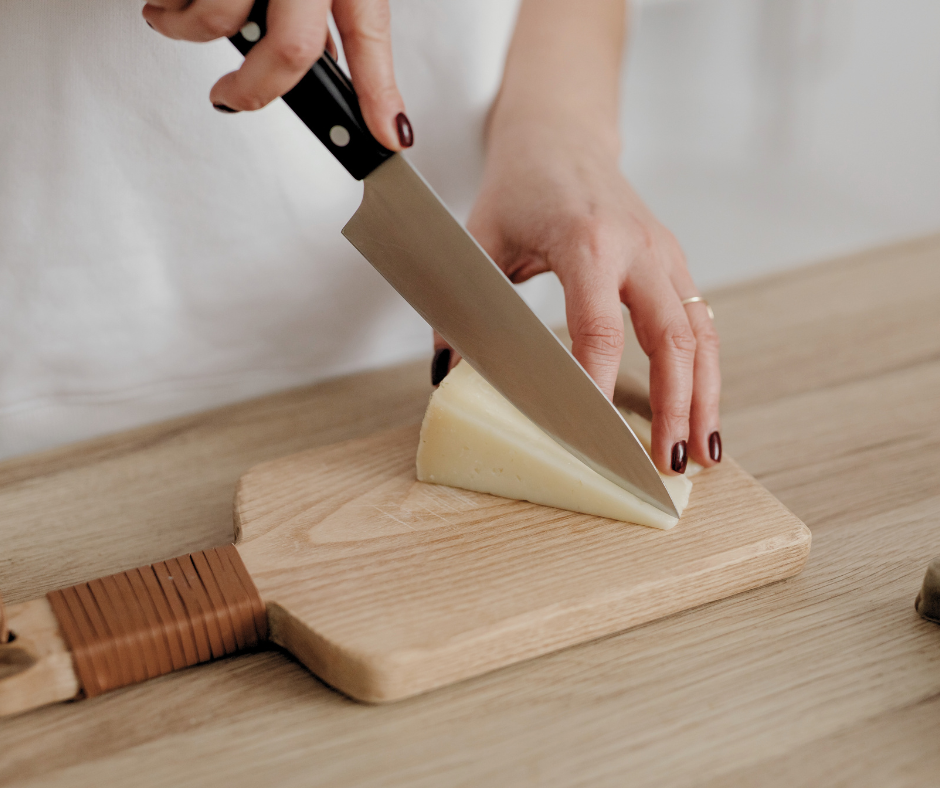

Creating a memorable holiday charcuterie board involves thoughtful selection and presentation. Key points include choosing a variety of meats and cheeses that cater to different tastes and textures, and selecting accompaniments that enhance these flavors.
Consideration for thematic and seasonal elements, as well as the dietary needs and preferences of your guests, is crucial. The presentation of your holiday charcuterie board, from the choice of the board itself to the arrangement and decorative touches, plays a significant role in its appeal.
Pairing the board with suitable beverages and providing options for different dietary requirements ensures inclusivity. Lastly, preparing and serving the board with attention to detail will make the experience enjoyable for both the host and the guests.
While the guidelines provided offer a foundation for creating a holiday charcuterie board, personalization and experimentation are key to making your board unique. Feel free to experiment with different flavor combinations, themes, and presentation styles.
Each charcuterie board can be a reflection of your personal taste and the specific occasion. Encourage feedback from your guests and use it as a learning experience for future gatherings. Remember, the goal is not just to serve food, but to create a memorable and enjoyable experience for everyone involved.








